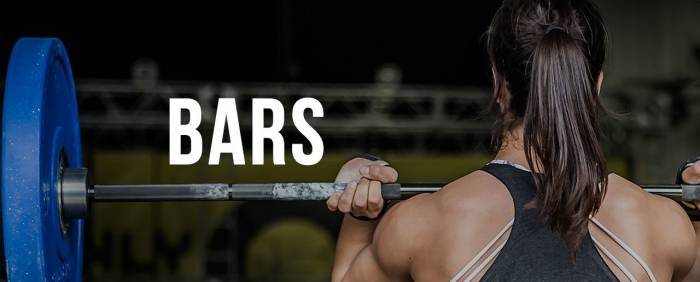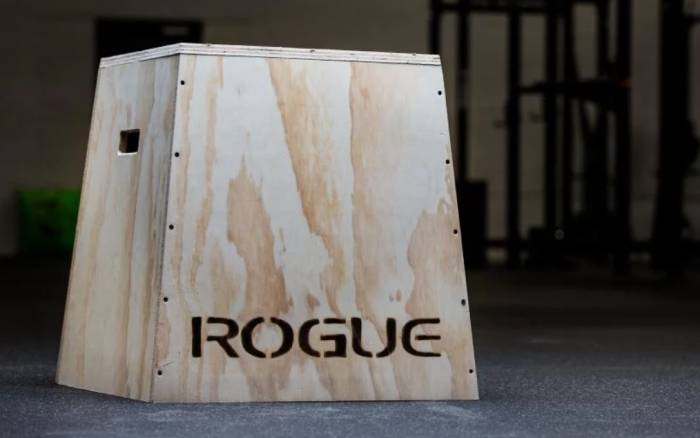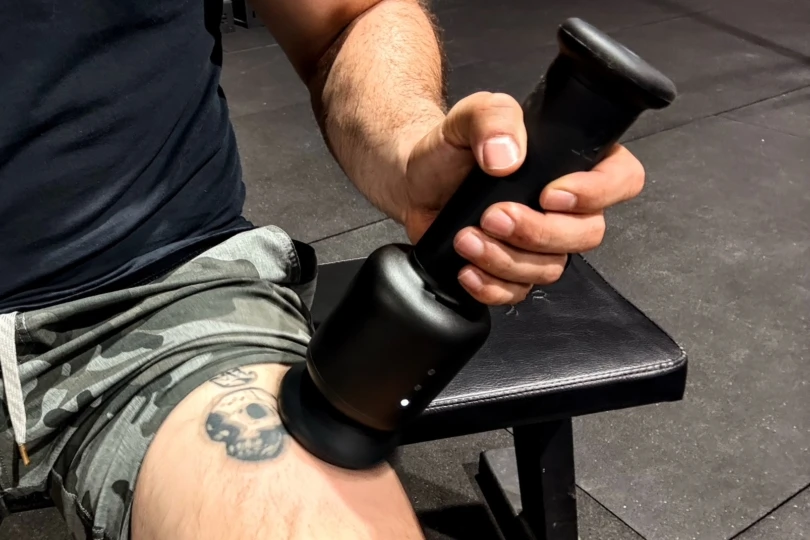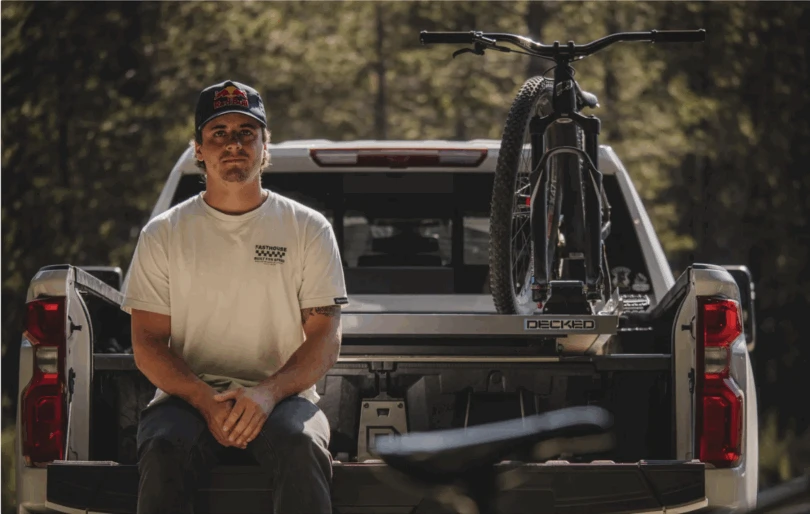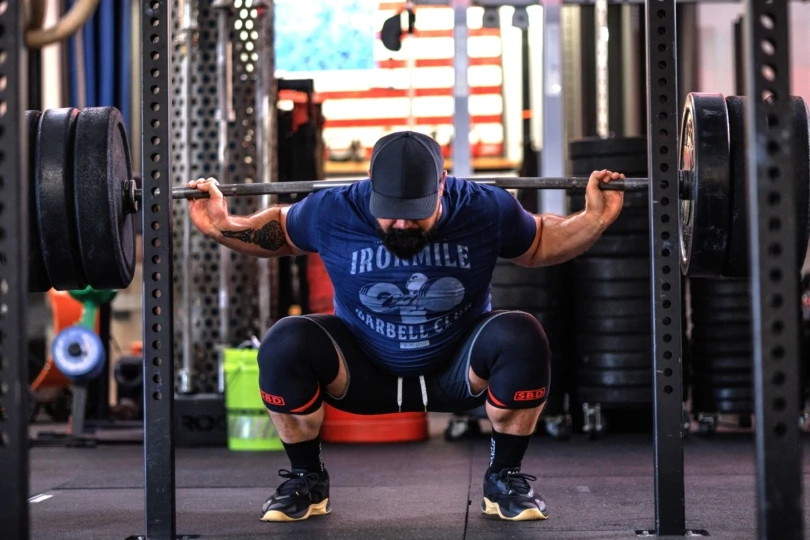If you’ve got some space to spare, it’s entirely possible to set up a CrossFit home gym in your garage, shed, basement — or anywhere you don’t care about dropping a dumbbell.
Top — Spring Fling 2018 CrossFit competition; photo credit: Ali Michelle Photography
By now, many athletes have at least dabbled in CrossFit. The workout style has been around since 2000.
Some diehards appreciate the community atmosphere of CrossFit-specific gyms, usually in warehouses designed for the intense, equipment-heavy workout. Others are ready to start making the same moves at home. If you’re in the latter camp, here’s a guide to get your CrossFit home gym going.
Barbell
OK, let’s start with your biggest investment: the barbell. This simple yet powerful steel bar will form the foundation of most home CrossFit workouts, so you don’t want to skimp here. But it’s helpful to know what to look for in a barbell because it can be confusing.
Quality matters more in the bar itself — less so in the bumper plates that slide on to add weight. Cheap barbells can bend, break, and rust. To avoid those issues, look for an Olympic-style weightlifting barbell, which should weigh 20 kilograms (44 pounds) and measure 28-29 millimeters in diameter for men, compared to 15 kilograms (33 pounds) and 25 millimeters for women.
If you can afford it, go for a stainless steel shaft, which will hold up best over time. The “tensile” strength of the bar is also important for longevity. The industry standard for tensile strength is 190,000 psi. But the higher the number, the better.
Then there’s the barbell’s “knurling,” or that cross-hatched pattern used for gripping the bar. Its placement varies along the shaft and is a matter of personal preference. For example, some CrossFit athletes train shirtless or with only a sports bra, which means center-laced knurling can rub on the chest or back during certain exercises. You might want to test your bar out in person for this reason alone.
The sleeves on the ends of your bar do two things: They hold the weights and also spin to allow the bar to pivot unimpeded by the weights’ rotational force.
Never buy barbells with hex bolts. You want a snap-ring sleeve or end-cap every time. If a barbell has bolts on the sleeve, just skip it.
Sleeves come with either bushings or bearings to allow it to spin. Bushings are cheaper and will suffice. Elite lifters will want bearings, but they add a lot to the cost of a setup. For most lifters, bearings are overkill.
Bumper Plates & Iron
When it comes to weight, you’ve got two options: bumper plates and iron. And if you’re a CrossFitter, you’ll most likely want the (sadly) more expensive one.
Bumper plates are preferable for most CrossFit workouts because they’re made to be dropped. The economy black bumper plates have a lot of rebound but work fine for most home gyms.
Standard 160-pound sets will include two 10-, 25-, and 45-pound weight duos. But think ahead about what you want to be lifting in the future, not just what you can clean today.
If you also do some powerlifting, like squats and deadlift, it’s worth considering a mix of iron and bumper plates. Iron is a lot cheaper, and you can usually find more than you’ll need on Craigslist for cheap. Use it to augment your heavy lifting when the 160 pounds of bumper plates isn’t enough.
If you can find bumper plates used, go for it. That’s a good place to save money if you can.
Kettlebells
If you’re into CrossFit or lifting, you know the Kettlebell intimately. It’s the king of the workout. Much like a dumbbell, this round weight works for an array of strength moves, from swinging to snatching.
While a simple device, kettlebells are not all created equal. They range in price from $50 to $330, but you don’t really need a primo kettlebell for your home gym. Plus, you can buy these used; just inspect them first. Heed these warnings to make sure you get a good one.
Stick to the basics: Traditional kettlebells are made of cast iron for durability. That’s a good thing. Unlike uniform size competition kettlebells, standard gym kettlebells get bigger in dimension as the weight increases. It best to start with a little more than you can lift comfortably right now, so you can grow into your kettlebell.
Also look for a kettlebell with a powder coating rather than epoxy, which can flake over time. A powder coating also improves the kettlebell grip. You’ll appreciate seamless handles that won’t rip your hands and a kettlebell opening that properly fits your grip. That’s especially true if you have very large or muscular hands.
Craigslist or your local sports resale store will work just fine for these, especially if you’re on a budget. Kettlebell Kings is a solid online source.
Pullup Bar

A pullup bar is one of the simplest ways to improve upper-body and abdominal strength during a CrossFit workout. You can start with the basic simple L pullup, bringing the legs past parallel as you gain strength. From there you can alternate grips and add a whole lot of variation from one simple piece of equipment.
The home-gym pullup bar is also an element where a little DIY can kick in. If you’ve got some basic building skills, it’s not too difficult to put together your own wall- or ceiling-mounted pullup station. You need some 2 x 6 pieces of wood, a bar or pipe, and carriage bolts. There’s one how-to guide above.
If you go the DIY route though, make sure the bar is strong enough to accommodate kipping and butterfly pullups. These dynamic moves add a lot more force to the pullup bar. You don’t want to wind up a YouTube sensation for the wrong reason, right?
A more expensive route is purchasing a squat stand or power rack. The benefit of this advanced but pricer setup is that it works well for pullup moves and as a home-gym anchor for performing other exercises like back squats in a safer environment.
Plyo Box
A plyometrics box is used for explosive moves like vertical leaps or step-ups, as well as upper-body exercises like tricep dips and angled pushups. Commercial plyo boxes come in wood, metal, and foam, and with different angles and adjustability options to customize your box-jumping experience.
But a plyometrics box can be expensive — $100 or more for what is essentially just a box. So you might consider making your own. If you have the time and basic building skills, a three-in-one plyo box is about as simple as it gets: three pieces of plywood, each measuring 28 x 24 x 20 inches.
Rather than a standard trapezoid-shaped plyo box, which is designed so jumpers won’t hit their shins, a square three-in-one DIY version (that can shift with your fitness level) will give you more bang for your buck at home. Check out this video on how to make one.
4 CrossFit Add-Ons
You can find all the below add-ons cheap or gently used for your CrossFit home gym.
Dense rubber mats: Those are super-essential things that people neglect until they drop their weights or slip on a sweaty concrete floor. Jefferson State CrossFit owner Billy Brown recommends horse stall mats. “We have those in the gym, and they’re great,” he said.
Gymnastic rings: An upper-body master for muscle-ups, front levers, dips, and rows, the classic gymnastic ring (in wood, metal, or even plastic) will give you a bunch of exercises without breaking the bank — or taking up precious space.
Medicine ball: Throw it against the wall, or test its limits with a clean, pushup, or plank. The medicine ball is a powerful remedy for a tight budget. More slam for your spend.
Jump rope: Every CrossFit athlete should own a jump rope. It’s one inexpensive way to master the “double-under” in the privacy of your garage.

